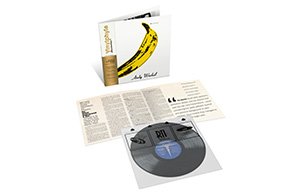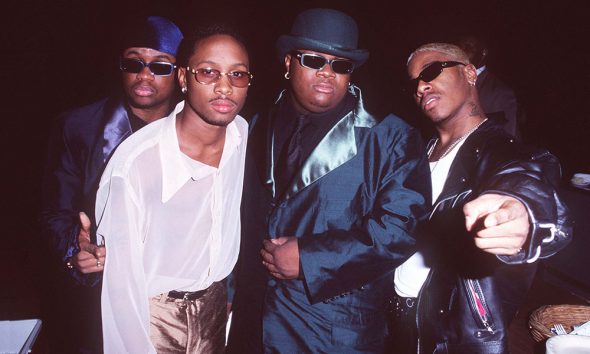‘Tumbling Dice’: The Story Behind The Rolling Stones Classic
The timeless classic from The Rolling Stones was an exercise in persistence.

Located in the picturesque seaside town of Villefranche-sur-Mer, a hidden gem on the idyllic Côte d’Azur, is Nellcôte: a grand, 19th-century mansion that overlooks the lapping waves of the Mediterranean. For five months in the summer of 1971, this magnificent haven of tranquility was steeped in chaos, as The Rolling Stones desperately and messily tried to record their new album, Exile On Main Street, within its historic walls.
The band had hightailed it to the French Riviera to escape a hefty tax bill while also attempting to disentangle what had become rather convoluted financial affairs. Determined to continue working, they had turned guitarist Keith Richards’ new home into a makeshift studio, replete with the band’s mobile recording unit parked outside.
Sessions there were largely erratic – tracks were recorded with whichever musicians happened to be present. The oppressive weather outside meant conditions inside were insufferable. Heroin use was rampant. Equipment was being stolen by one of a stream of dubious visitors. And the local police were breathing down their necks. New songs were understandably evolving fitfully, so older, unplumbed ideas were seen as a good bet to get the creative process back on track.
Listen to The Rolling Stones’ “Tumbling Dice” now.
The recording
“Good Time Women” was one of those lucky sparks that was reignited. A year before, the Stones had put to tape the rough-around-the-edges, chugging electric blues number during sessions for their Sticky Fingers album at Mick Jagger’s English country retreat, Stargroves. Its embryonic state was affirmed by Jagger’s provisional vocals; garbled references to “red light women” who like to “party all night” audibly sound like the testing ground for lyrics awaiting a final draft. They would have to wait.
Fast-forward to France, where “Good Time Women” was plucked for revision, and the Stones labored intensely over its progress. “We worked on that for a couple of weeks at least, just the basic track,” remembered engineer Andy Johns. “I know we had a hundred reels of tape on the basic track.”
This way of working – repeatedly jamming and honing a song as long as it takes – was driven by Keith. “If you chase a song far enough, you’re gonna corner it,” he later said, “like a rat!” Eventually, “Good Time Women” began to transform into something else; the progeny inherited the original’s swaggering rhythm and instrumental pauses, but still required a sprinkling of magic to satisfy its creators.
After endless try-outs and noodling, Keith stumbled upon the song’s saving grace. “I remember writing the riff upstairs in the very elegant front room,” he said, “and we took it downstairs the same evening and we cut it.” That ringing, descending lick was to become the song’s intro, chorus hook, and defining feature. The guitar’s evocative sound is down to Keith employing an open G tuning, playing with only five strings and a capo on the fourth fret. “I was starting to really fix my trademark,” he said of the style. “I was really starting to find all these other moves, and how to make minor chords and suspended chords. I discovered that the five-string becomes very interesting when you add a capo. This limits your room to maneuver drastically… but also it gives a certain ring, a certain resonance that can’t be obtained really any other way.”
The master take, caught after inspiration struck, was recorded on August 3rd, just after bassist Bill Wyman had excused himself for the day. “Bill was there for the early rehearsals,” guitarist Mick Taylor later revealed, “but for some reason, when we came to do the final take, Bill wasn’t around, so I stepped in. I met him again just recently and asked if he’d ever minded about that, and he said no, he was perfectly happy with it.”
The song’s development
After sessions wrapped up in France, the album tapes were taken to Sunset Sounds Studios in Los Angeles where, for all of winter 1971 and into the following year, the Stones finessed and embellished the uneven basic tracks. It was here that Jagger finally added his lead vocals to the songs, including the former “Good Time Women,” its new lyrics drawing inspiration from their recent sojourn. “‘Tumbling Dice’ may have had something to do with the gambling den that Nellcôte turned into – there were card games and roulette wheels,” said Keith. “Monte Carlo was around the corner. [The Stones’ sax player] Bobby Keys and cats did go down there once or twice.”
“I had the theme for it,” Jagger clarified. “I didn’t know anything about dice playing, but I knew lots of jargon used by dice players. I’d heard gamblers in casinos shouting it out. I asked my housekeeper if she played dice. She did, and she told me these terms. That was the inspiration.”
Thus, “Tumbling Dice” finds Jagger as a playboy gambler, rolling away from the cheating women that are wearing him down (“Don’t need no jewels in my crown,” he sneers) to strike out as a “lone crap shooter, playing the field every night.”
The song was further augmented in LA with the addition of background vocalists Vanetta Fields and Clydie King adding a touch of gospel soul to proceedings (“A little bit of those girls goes a tremendously long way,” Jagger testified), and the double tracking of Charlie Watts’ drums, designed to bolster the beat. Charlie had trouble catching the groove of the song’s ending (“Every now and then,” reported Andy John, “Charlie would get a mental block, especially if Mick or Keith were giving him a really hard time about something that could be quite simple”) and so producer Jimmy Miller was deputized to punch in the distinctly more swinging final bars. “You can hear the difference in styles,” Johns noted.
A grueling mixing process followed. Johns sweated for two months as Jagger urged for improvement. Though Mick was seemingly unhappy with what was ultimately delivered (“I think they used the wrong mix for that one,” he’d said), there’s no denying that the strength of “Tumbling Dice” lies in its cohesive force. In terms of dynamics, the vocals may be on a level with the swashbuckling guitars and steadfast drums, but why shouldn’t they? The Rolling Stones were always at their most potent when charging as an unyielding, undivided gang, and it’s the sonic symmetry of “Tumbling Dice” that makes it an exemplary demonstration of their power as a united front.
The release
“Tumbling Dice” was released as a single in April 1972. It reached Number 7 in the US and Canada, hitting Number 5 in the UK, making it the only single from Exile On Main Street to crack the Top 20 (the only other release, “Happy,” fared less well).
A firm fan favorite, “Tumbling Dice” is the Stones’ fourth most performed song, having been played consistently on stage for 50 years. However, despite the song’s enduring popularity both with the Stones’ fans and peers (it has been recorded and played by the likes of Linda Ronstadt, The Black Crowes, Kid Rock, Bon Jovi, and Keith Urban), it seems “Tumbling Dice” still leaves Mick cold. “I don’t really know what people like about it,” he once confessed. “I don’t think it’s our best stuff. I don’t think it has good lyrics. But people seem to really like it, so good for them.”
Fortunately, we can rest assured that as long as the Stones keep rolling, so will “Tumbling Dice,” thanks to Keith’s ongoing love for it. “It’s always been a favorite,” he enthused. “I could play it all night.”















Barney
October 23, 2022 at 9:00 pm
I agree with Mick
Jack
October 23, 2022 at 9:48 pm
Charle Watts . Drums give the song its groove.
John
October 23, 2022 at 10:57 pm
Great song to me! Still gets me!
Benno D’Over
November 1, 2022 at 12:39 am
I ve always liked Tumbling Dice. I have an interesting origin story about the Beatles Lucy in The Sky though. In addition to the story about a simple drawing by Julian there was a similarly title by another group two years earlier. In 1965 a song called Judy in Disguise…with glasses.